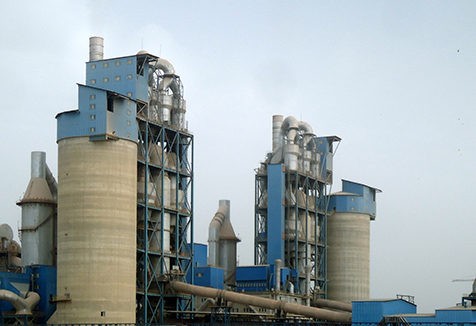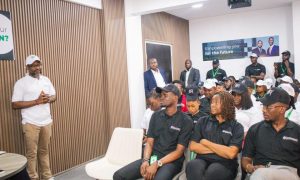In 2008 the federal government lifted the ban on the importation of bulk cement and granted import licenses to six new firms, alongside the existing manufacturers in an effort to flood the market with cement and force the price down.
At the time Chief Charles Ugwuh, the then Minister of Commerce and Industry said that the actions would make up for the 11.5 million metric tonnes per year shortfall; Local manufacturers only brought about 6.5 million metric, while the demand was at about 18 million metric tonnes per year.
The six new licensees were: Minaj Holdings Limited, Enugu; Madewell Products, Sapele; BUA International Limited, Kano; NICA Limited, Maiduguri; Reagan Renaissance Limited, Calabar and MAAN Labadi, Lagos.
The initial companies were: Lafarge Cement WAPCO Nigeria, Ashaka Cement, Benue Cement Company, Obajana Cement, UNICEM Calabar, Cement Company of Northern Nigeria, Sokoto and DURECHEM, Ogun State.
At the time many people expected that the price of cement would crash to about N1, 000. It did not. It stayed high and many pointed accusing fingers at the high import duties and financing costs as well as the fluctuations in the government policies.
As a result of the government investment in the cement industry during the post cement armada era of the mid-70s, the industry grew from 5 to 8 plants in 1970, and local production rose from about 1.4 million metric tonnes to 2.8 million metric tonnes and in 1986, it peaked at about 3.6 million metric tonnes.
But by the year 2000, only four out of the eight cement manufacturing companies were functioning and the cumulative output was down to 2.2 million metric tonnes.
The increase in local production of cement in the 1970s caused the imports to reduce to as low as 0.8 million metric tonnes.
An annual capacity of 3.5 million metric tonnes was reported in 1986 and that comes to 81.4% supply which of course had a positive effect on the price of the cement as well as employment, and the economy. Sadly, massive importation was permitted after this era and it starved the local manufacturers.
The local cement industry was reported to have crashed to a rock bottom of 1.98 million metric tonnes which made up for only 23.53% of supply. Importation of the item on the other hand rose to 8.4 million metric tonnes which is over 70% of supply.
The federal government put its right foot down once again just after the year 2000 and the country witnessed a steady rise to over 6 million metric tonnes by 2002. Between 2002 and 2008 new players were lured into the industry by the slight consistency in the policies and an additional 11.8 million metric tonnes was achieved. But after 2008 things got a little shaky again. The Federal Government had introduced an import substitution regime in 2002 with the aim of reviving the industry and weaning the country off importation. Ironically, by 2008 there was an increase in consumption which peaked at 13.04 million metric tonnes.
Nonetheless, the local production had increased to 6.40 million metric tonnes, which made up for representing 46.50% of total supply and the balance of 53.50%(6.98 million metric tonnes) was supplied via imports.
The average import in price 2008 was $127.50 per tonne so that the 6.06 million metric tonnes which was locally produced would have cost the country $770 million to import. This is money that would have been paid to foreign cement suppliers.
By 2009 the projection for local production was about 10 million metric tonnes, and that amounted to over 50% of supply. At some point in 2010 reports said that the Director-General, Manufacturers Association of Nigeria (MAN), Jide Mike, told the press that MAN was not opposed to the lifting of the ban on imported cement, but the association would rather have the ‘real’ operators do the importation.
The media reports also said he made no secret of his opinion that the government should encourage importers to set up manufacturing facilities in the country by putting the right “measures” in place and his preference for a government regulation that only gave importation licenses to the importers who could show proof that they are actually building factories for local cement manufacturing in Nigeria. He supported his position by saying that after the introduction of the policies from the committee, several cement importers had built new cement plants in various locations in the country and that during the first 6 years of the policy, an increase of 11 million metric tonnes per annum was recorded. Reports say he feared that allowing unchecked importation would open the country to the influx of “substandard cement.”
Also in 2010 the Executive Secretary, Cement Manufacturers Association of Nigeria, James Salako was quoted in the media as saying: “importation should be done along with consistent strict implementation of the backward integration policy that will ultimately bring us out of our present perpetual dependence on imports.”
The President set up a committee in May 2009 which was headed by the minister of finance to look at the problems of the industry and find a lasting solution. The recommendations of this committee were considered and the President made concessions and put up new policies to attract investments into the industry.
Many argue that not all of the concessions have been implemented and there are allegations that people have been made to pay 20% on imports instead of the approved 5%. Add that to the rumours that bagged cement (banned since 2000) still comes through the ports and the reports that floating packing ship still bring cement in to the country. In addition to all that there was a two-year long ‘free for all’ importation of bulk cement which only ended a short while ago.
The truth is that the local manufacturers are still subjected to ‘unfair’ competition which also means that investors in the cement industry are still subjected to ‘unfair’ risks. By the time you add the high energy costs, electricity costs and maintenance costs to the formula it is still not a pretty picture. These government policies are said to be capable of bringing the country a point of self sufficiency cement wise by 2013 but the government still has quite a bit to do.
The truth is that, it is still cheaper to import than to manufacture. It takes foresight, faith and a lot of capital to invest in the local production of cement; so when an investor puts his or her money into it, that investor deserves all the applause and encouragement he or she can get.
Typically it is the initial investors that would bear the brunt as they blaze the trail for others to follow. Without doubt Dangote cement’s six million annual capacity plant should be applauded. The new cement plant situated in Ibese, Ogun State, would increase the company’s total capacity to 20.25 million metric tonnes of Cement per annum. The company’s Obajana Cement plant currently produces 10.25 million metric tonnes per annum, while its Gboko Plant has an installed capacity of 4 million metric tonnes.
The new plant was inaugurated by President Goodluck Jonathan. According to the official statement the company presented to the Nigerian Stock Exchange, the plant has 2 lines which would generate 6 million tonnes per annum for the time being and at a later date another 2 lines would be installed so as to increase production to 12 million tonnes per annum.
Reports say the President, Dangote Group, Alhaji Aliko Dangote, is aiming at achieving a target of “46 million metric tonnes of production and terminal capacity in Africa by 2015” and that he aims at becoming a “pan-African champion in the (cement) sector, capable of competing globally with the largest cement companies in the world.”
The success of Dangote cement at this would be a success for the Nigerian economy, a success for the job seekers, and a success for the investors.





















